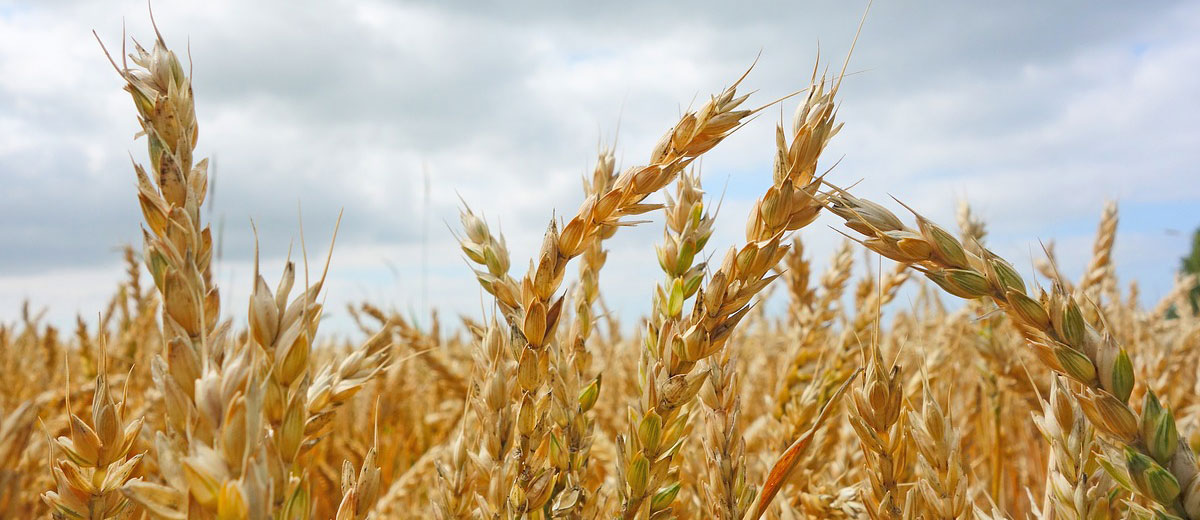
Fungicide Considerations for Dry Conditions
A number of diseases can affect annual crops that are grown in western Canada. When deciding if and when to apply a fungicide, you need to consider the disease triangle, economics of the application, the number of life cycles per year for the disease and the best way to apply the product.
For a disease to occur in the field, there must be three components present, called the disease triangle. They are:
- The pathogen – the organism that can infect the plants;
- The host – the plant or plants that can be infected by the pathogen; and
- The environment – has to be right for the pathogen to infect the plant.
In dry conditions, the pathogen and the host may be there, but the environment may not be right for the disease to develop and infect the plant. For example, most foliar diseases in pulses are favoured by warm, moist conditions and lush crop canopies. In a drier year, the canopy may not close for a lentil crop or there may not be rain splash at the right time to spread anthracnose. An exception is powdery mildew in pulses because it can occur in dry years.
Before a fungicide application is made, consider the economics. It’s not unusual for disease to be present in a field, but it may not be at levels that are economically damaging to the crop. It also may not be at an appropriate stage to spray or the plant damage from the disease may be extensive enough that a fungicide application is no longer protecting yield. Only apply a fungicide if the timing is right to control or suppress the diseases and an economic gain is expected.
The expected impact of a fungicide on net return for a field can be estimated per acre. If the estimated net return is positive, a fungicide should be applied. If the estimated net return is negative, the fungicide should not be applied. This can be calculated using the following steps:
- Estimate the yield of the crop based on previous years’ experience and current evaluation of the crop. Make sure to keep in mind:
- Under drier conditions yield may be lower; and
- Crop staging may be variable. If so, target when most of the crop is at the optimal stage to minimize loss to disease as much as possible. Plants that are out of the fungicide application window may not get adequate protection and yield may be reduced. Always ensure that the proper pre-harvest interval is followed for all the crop.
- Determine the expected yield savings with the fungicide applied as a percent, taking into consideration:
- Is the environment favourable for disease?
- Is the variety seeded susceptible to the disease?
- Does field history have an impact?
- Fungicide applications can protect currently healthy plant tissue in the field for a specific amount of time.
- Multiply estimated yield, estimated yield savings and potential or contracted selling price to get an expected gross return per acre.
There are two common classifications of diseases: monocyclic and polycyclic.
Monocyclic diseases only have a single disease cycle per year and scouting should be focused on the risk of the disease occurring. Risk can be assessed by monitoring for environmental conditions that favour disease development and looking at field history.
The Canola Council of Canada’s canola encyclopedia has a checklist for fungicide application for sclerotinia in canola. It can be used to estimate risk and help you make informed fungicide application decisions.
For Fusarium Head Blight (FHB), SaskWheat’s FHB risk assessment maps and the risk assessment table can help you decide if a fungicide application should be made. For additional information and consulting about applying a fungicide application to suppress FHB, contact your local agrologist or crops extension specialist.
Polycyclic diseases have multiple infection cycles within a single year. Most of the foliar diseases in Saskatchewan are polycyclic. Fungicides should be applied before damage to critical tissue occurs or at the first sign of symptoms, depending on the product. Fungicides cannot reverse any damage that has occurred in the crop. For some diseases, additional applications may be needed. When conditions are dry, disease is less likely to develop. If disease symptoms do occur, their progression to other parts of the plant or other plants may slow or stop. Scouting fields becomes even more important in years where yields are likely lower to be sure that the cost of a fungicide application is necessary. Focus scouting on looking for initial symptoms and then monitoring disease progression within the crop canopy.
When the decision has been made to apply a fungicide, always follow label rates, apply the fungicide at the right plant stage and time of day, use the correct water volume to ensure optimum effectiveness, consider fungicide placement and follow the pre-harvest interval. Using lower rates may reduce the effectiveness of the fungicide and may also increase the selection pressure for pathogen resistance to the fungicide. Using the recommended water volume will help ensure that the fungicide is evenly distributed over the leaf surface. This is especially important for contact fungicides. It is critical to ensure that the fungicide is being applied with good coverage to the tissue that needs protection. Appropriate nozzle selection can also help ensure good coverage. Pre-harvest intervals must be followed to ensure that residues do not exceed the maximum residue limit (MRL) of the fungicide being applied. Pre-harvest intervals can be found on the product label and in crop protection guides.
For more information, please contact the Agriculture Knowledge Centre at 1-866-457-2377.
For the latest information and for more updates on everything Kindersley ‘Like’ the Kindersley Social Facebook page below…








































